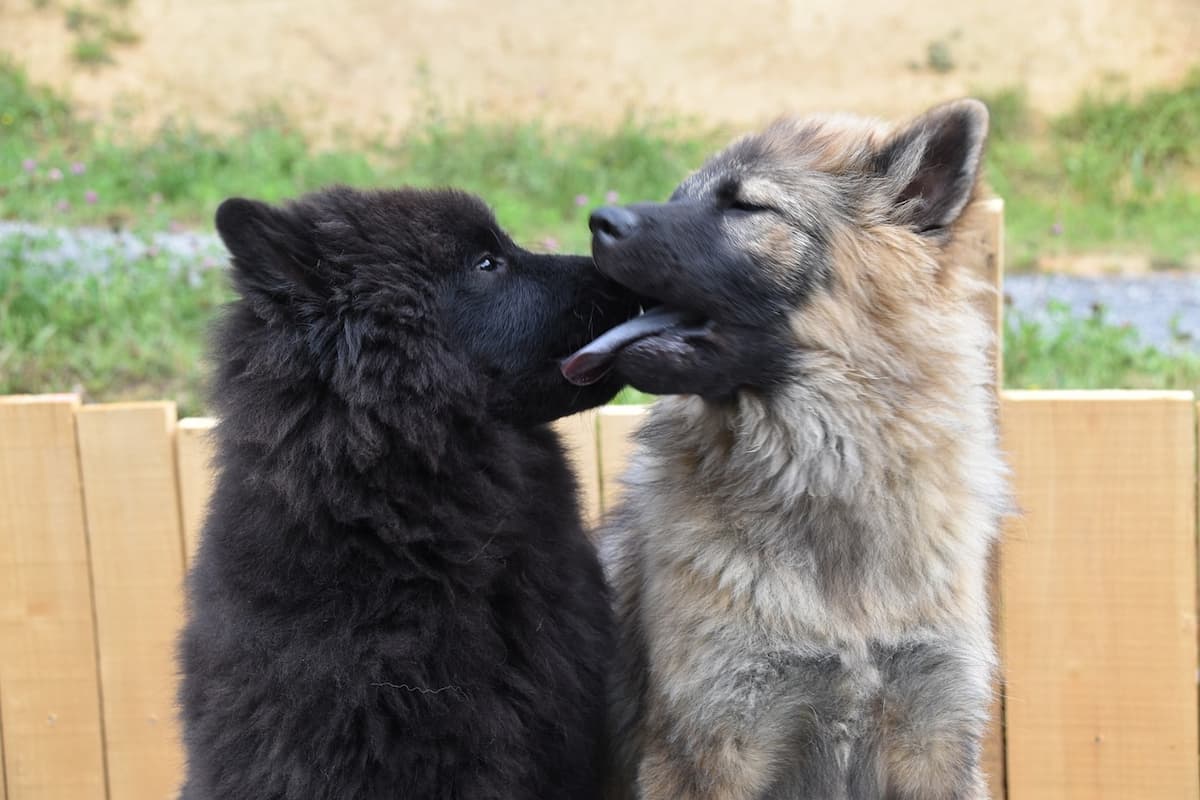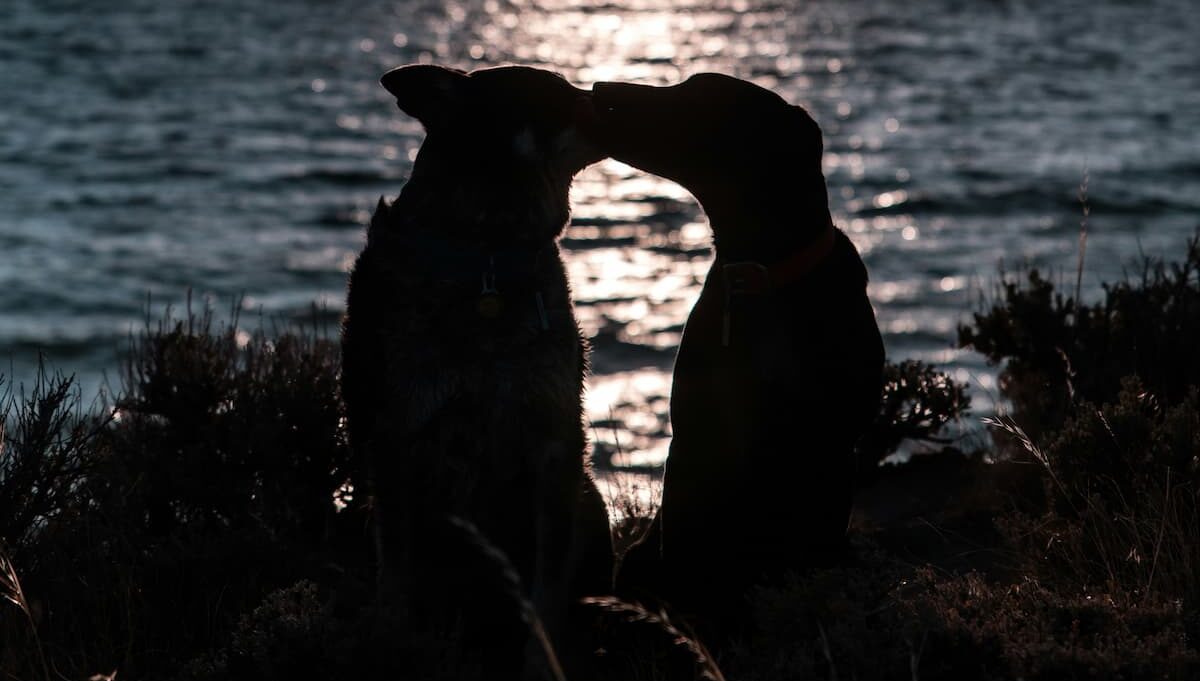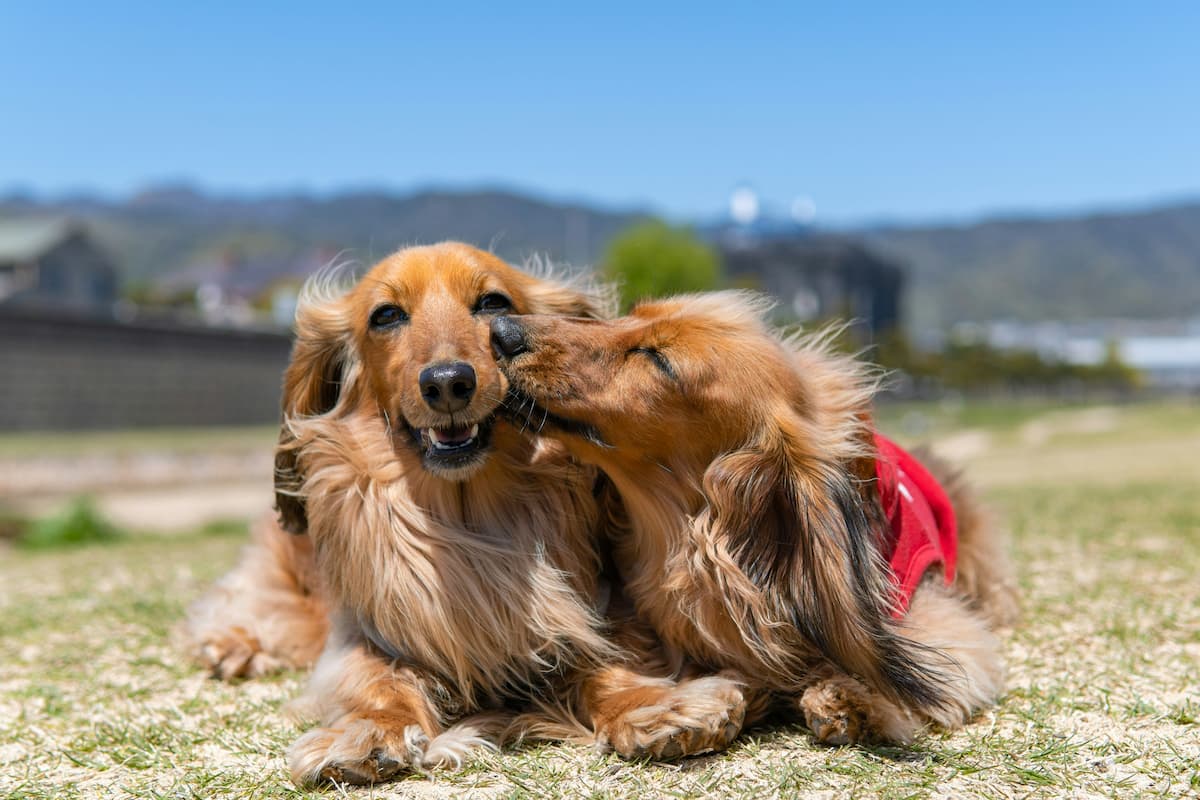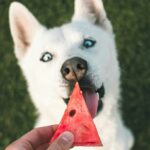Have you ever caught your beloved furry friend enthusiastically sniffing another dog’s mouth without hesitation?
It may seem rather peculiar, even gross, to us humans.
But in the world of dogs, this behavior is perfectly normal… and actually pretty fascinating as this article will show you.
Why Dogs are So Enamored by Each Other’s Mouths?
Dogs have a unique way of showing affection, and one of the ways they do this is by constantly sniffing and licking one another’s mouths.
It may seem strange to us, but for dogs, this behavior serves a vital purpose in their social interactions.
Let’s delve deeper into the fascinating world of canine behavior and explore why dogs are so enamored by each other’s mouths.
1. Scent Communication
Canines have an incredibly powerful sense of smell, and their noses are like supercomputers, detecting even the faintest of scents.
When dogs sniff each other’s mouths, they are exchanging a wealth of information.
Their breath carries important chemical signals, called pheromones, that convey important messages about their identity, emotional state, and even their overall health.
It’s their unique way of saying, ”Hello, how are you feeling today?”
2. Oral Communication
But the importance of oral communication in the canine world goes beyond just sniffing.
Dogs also engage in a behavior known as “mouth greeting” or “mouth play.”
This involves dogs nipping, mouthing, or even licking each other’s mouths during social interactions.
While it may seem strange to us humans, it’s actually a form of friendly communication in the doggy realm.
This behavior helps dogs establish and maintain social bonds, convey trust and affection, and even diffuse potential conflicts.
It’s their way of saying, “Hey, I trust you, and I mean no harm!”
3. Social Bonding
Just like humans shake hands or hug as a sign of affection, dogs use mouth sniffing to strengthen their social bonds.
By exploring each other’s oral region, canines gain insights into the other dog’s mood, intentions, and familiarity.
This helps foster trust and camaraderie among them.
In fact, you might have noticed how two dogs meet and immediately start sniffing each other’s mouths as if catching up on the latest news from their furry friends.
4. Pack Hierarchy and Submission
Another interesting aspect of this behavior lies in the realm of hierarchy among dogs.
By sniffing and licking another dog’s mouth, a submissive dog is expressing deference and respect to a more dominant individual.
This gesture helps maintain order within a pack and prevents potential conflicts.
It’s like the canine version of a polite courtesy.
So, the next time you see your furry friend engaging in mouth sniffing with another dog, remember that they are not only satisfying their curiosity but also building and maintaining their social connections in the doggy world.
5. A Taste of the Tasty
While dogs primarily rely on their sense of smell, licking each other’s mouths can also be driven by a simple desire for a tasty treat.
Dogs have a well-developed sense of taste, and they may be drawn to the remnants of food particles or the lingering scent of something delicious on another dog’s breath.
Just like how we humans might be tempted to sneak a taste of our favorite snacks, dogs may indulge in this behavior hoping for a savory surprise.
6. Inherited Behavior
Dogs are descendants of wolves, and many of their behaviors can be traced back to their wild ancestors.
In wolf packs, oral interactions are a common way of maintaining social hierarchy and resolving conflicts.
Similarly, dogs may engage in mouth-focused behaviors as a way of establishing their role within a group or as a sign of submission.
It’s an instinctual behavior that has been passed down through generations.
Tips to Foster Positive Mouth-Related Behavior in Dogs
While this mouth-sniffing behavior may seem strange to us, it’s a natural canine instinct that we should encourage, as long as it remains respectful and safe.
Here are a few tips to foster positive mouth-related behavior in dogs:
1. Early and ongoing socialization is key in helping dogs develop healthy social interactions.
By exposing them to a variety of dogs with different personalities, sizes, and breeds, we can help them become more comfortable and confident when interacting and sniffing other dogs’ mouths.
2. Positive Reinforcement: Rewarding your dog for exhibiting appropriate mouth-related behavior can go a long way.
Praise and treats can reinforce their good behavior and let them know that they are doing the right thing.
3. Monitoring: While mouth-sniffing is a natural behavior, it’s essential to keep an eye on the interaction to ensure that it remains respectful and doesn’t escalate into aggression.
If you notice any signs of discomfort or tension, it’s best to intervene and redirect their attention to a positive activity.
By understanding the reasons behind dogs’ fondness for each other’s mouths and implementing these tips for healthy social interactions, we can create a harmonious environment where our four-legged friends can engage in their natural behaviors and build strong bonds with their canine companions.
So next time you see your dog curiously sniffing another dog’s mouth, remember that it’s just their way of saying hello and gathering vital information about their furry friend.
Embrace their natural behavior, encourage positive interactions, and watch as their social skills flourish!
FAQ
Q: So, why exactly do dogs take such an interest in each other’s mouths?
A: Well, it all comes down to communication.
Dogs have an incredible sense of smell, which is their way of getting to know the world around them.
When they sniff another dog’s mouth, they’re collecting essential information about their new friend’s body language, health, and even emotions.
Q: How does sniffing each other’s mouths help dogs communicate?
A: It’s like reading a secret diary written in scent!
Dogs have scent glands in their mouths that release unique odors.
These smells convey a wealth of information – from identifying other dogs in their social group or family to determining a potential mate’s reproductive status.
By swapping these odorous messages, dogs can gather important cues about their peers.
Q: Is there a social aspect to this behavior?
A: Absolutely!
Dogs are all about building social bonds.
Sniffing each other’s mouths is a polite way to say, “Hi, friend!” and get a snapshot of their pal’s recent activities.
It’s almost like having a little chat among canine friends!
Q: Can you provide examples of what dogs can learn from each other’s mouths?
A: Of course!
Through a simple sniff, dogs can learn if their buddies have recently eaten something tasty, detect any peculiar odors that may indicate illness, or even uncover potential threats lingering around.
It’s like their own little doggy news network encoded in odor signatures!
Q: Is it only other dogs’ mouths that they find fascinating?
A: Not at all!
Dogs are curious creatures who use their noses to explore the world around them.
Along with other dogs, they’re also drawn to sniffing our mouths because they recognize that our breath holds crucial information about our emotions and health.
It’s another way they try to understand the humans they love.
Q: Is there such a thing as too much mouth-sniffing?
A: Well, it depends.
Dogs use this behavior as part of their natural interactions, but it’s perfectly fine to set boundaries.
Some people might find excessive face-to-face sniffing a tad uncomfortable, and that’s okay.
As responsible dog owners, it’s essential to ensure that both dogs and humans involved are comfortable with the level of interaction.
Q: Can we learn something from this unique dog behavior?
A: Absolutely!
Dogs have a lot to teach us, especially when it comes to communication.
Their reliance on scent reminds us of the power of non-verbal cues and the importance of being present, curious, and attentive to others around us.
Q: Any final thoughts on dogs and their mouth-sniffing habits?
A: While it may seem a bit odd to us humans, sniffing each other’s mouths is dogs’ equivalent of a friendly handshake or a warm embrace.
So, embrace the fascinating world of doggy communication, and maybe next time you’ll have a deeper appreciation for their wet and slobbery greetings with their furry pals.
Final Thoughts
Why do dogs seem to enjoy sniffing and licking each other’s mouths?
It may seem bizarre to us humans, but in the realm of dogs, this behavior serves a purpose beyond simple curiosity.
Just like us, dogs have their own unique way of communicating and forming connections with one another.
And believe it or not, their mouths play a crucial role in this social bonding process.
Think of it as their version of a canine handshake or a friendly exchange of greetings.
You see, dogs possess an incredible sense of smell that far surpasses our own.
Their noses are capable of detecting a myriad of scents, and when they sniff each other’s mouths, they’re actually collecting a wealth of information.
It’s like reading a newspaper filled with headlines about their companion’s mood, health, and even diet.
Through this seemingly odd act, dogs can determine if their fellow canine friend is feeling relaxed, stressed, excited, or even unwell.
They can detect the subtlest of chemical changes in the breath, which could indicate anything from fear to contentment.
It’s an intricate language that only they truly understand.
Furthermore, licking each other’s mouths is not just a pleasant way to say hello; it’s also a grooming ritual that fosters social harmony within their packs.
Think of it as a gesture of comradeship and trust.
A gentle lick can not only clean and care for another dog’s face, but also strengthen their bonds and exchange signals of friendship.
So, next time you witness your furry friend engaging in a passionate mouth-sniffing session with another dog, remember that they’re simply engaging in a conversation that goes far beyond our understanding.
It’s their unique way of deciphering the world around them, forming connections, and expressing their affection.














